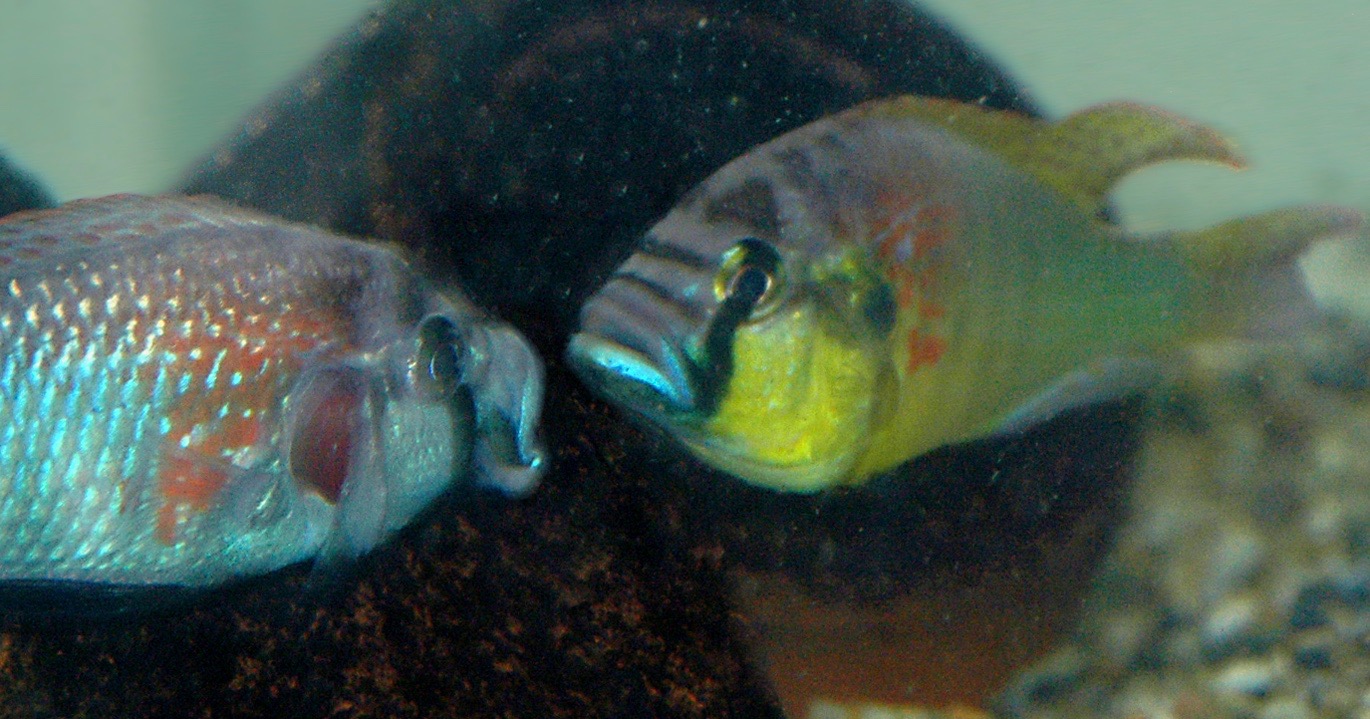 Intelligent Design
Intelligent Design
Cells Reach Out and Touch, Providing Evidence of Foresight and Design

An article yesterday for Evolution News about allostery showed how an individual protein or RNA can send information to its distant domains. Information sharing can also occur between chains of molecules arranged in a signaling cascade, where each one triggers action in the next. This is a bit more like the Rube Goldberg technique, except that in cells, it is much more logical and reliable. Here are new examples of mechanosensing (the ability to sense a touch) and mechanotransduction (the ability to pass on touch information). A paper on bioRxiv explains, “Cells sense the physical properties of their environment, translate them into biochemical signals and adapt their behaviour accordingly.”
One such system is the MAPK/ERK pathway that all eukaryotic cells use to get information from the cell surface into the nucleus. A diagram on Wikipedia’s page makes it clear that many individual factors take part. Once the EGFR receptor triggers ERK on the cell’s exterior membrane, a signaling cascade begins with at least 16 cofactors and proteins transporting the information to the cell nucleus, which responds by transcribing code proteins or enzymes. ERK signals can also spread throughout the cytoplasm, leading to a variety of responses depending on the nature of the triggering molecule.
Doing the Wave
Now, Japanese scientists have noticed a further response in neighboring cells. When one cell’s ERK pathway is triggered, that cell shrinks. Neighboring cells sense the change and respond by shrinking themselves, causing a chain reaction. Researchers at Kyoto University likened this to how crowds do “The Wave” at sporting arenas, passing collective motion throughout the stadium.
“Cells are tightly connected and packed together, so when one starts contracting from ERK activation, it pulls in its neighbors,” elaborates [Tsuyoshi] Hirashima. This then caused surrounding cells to extend, activating their ERK, resulting in contractions that lead to a kind of tug-of-war propagating into colony movement. [Emphasis added.]
The response involves both chemical and mechanical factors. “Our work clearly shows that the ERK-mediated mechano-chemical feedback system generates complicated multicellular patterns,” the lead author comments.
Prickly Antennas
Another touch-sensitive mechanism is the so-called Hedgehog (Hh) pathway, so named because defects in its function cause fruit fly embryos to look like the spiny animals. Hedgehog pathways are often associated with the primary cilium, an organelle that sticks out like an antenna from the cell membrane and senses its environment. When triggered, it also causes a cascade of reactions inside the cell.
Craig Albertson, a researcher at the University of Massachusetts, Amherst was curious why cichlid fish can “evolve” so quickly to environmental changes, including changing the shapes and densities of bone in their jaws. This capacity for “phenotypic plasticity” is not evolution of a Darwinian kind, but rather a programmed response to environmental cues.
Albertson works with a system — cichlid fishes — known throughout the scientific world as champions of phenotypic plasticity that can alter, in a single season, jawbone hardness or shape to match feeding conditions.They are also well known for their rapid evolution and diversity in jaw shapes, which has enabled cichlids to adapt to many different food sources, including algae, plankton, fish, snails and even the scales of other fishes.
Albertson speculated that this capacity for rapid response to environmental cues might be associated with the Hedgehog signaling pathway. By tuning the amount of Hh signal, his research team discovered that more bone was deposited, or vice versa.
Albertson, explains, “Bone cells in these fish are innately sensitive to different mechanical environments. But we were able to play with this system using a single molecular switch — you turn up the Hh signal and the cells become more sensitive to the environment, or you turn the molecular sensor down and the cells become almost deaf to the environment.”
Like ERK, the Hedgehog signaling pathway involves numerous factors that interact in chain reactions. And it is triggered by a “mechano-sensor” on the cell, the primary cilium.
An important clue came as Albertson learned more about how this molecular pathway works. He explains, “There is a well-known mechano-sensor on most cells, including those that make the skeleton, called the primary cilium. Cells that lack this organelle are unable to sense or respond to environmental input, including mechanical load. It turns out that several key protein components of the Hedgehog pathway are physically associated with this structure, making it an obvious candidate for an environmentally sensitive signal.”
The team believes this kind of response to environmental cues could be responsible for other kinds of rapid “evolution” in other animals. “The Hh signal has also been shown to regulate plasticity in beetle horns, so there may be something special that positions it to be an environmental sensor across tissues and animals,” Albertson says. This is not Darwinism; it is pre-programmed response using molecular machines capable of sensing touch.
Stretching Exercises
How does skin stretch when a body grows? The answers may rely on mechanosensitive factors. Nature News and Views said recently, “Stretching the skin of mice reveals that mechanical strain is communicated by a subpopulation of stem cells that proliferate and promote mechanical resistance, and so generate extra skin.”
Reach Out and Touch
One of the most remarkable examples of touch communication was announced this month in Nature. Researchers at the University of Montreal confirmed the existence of “nanotubes” that grow out of cell membranes and reach across comparatively large distances to touch other cells, affect their behaviors, and even share organelles with them. They found these nanotubes in the retinas of mice, and believe they are responsible for controlling blood flow in the capillaries.
“For the first time, we have identified a communication structure between cells that is required to coordinate blood supply in the living retina,” said Dr. Adriana Di Polo, a neuroscience professor at Université de Montréal and holder of a Canada Research Chair in glaucoma and age-related neurodegeneration, who supervised the study.
“We already knew that activated retinal areas receive more blood than non-activated ones,” she said, “but until now no one understood how this essential blood delivery was finely regulated.“
These nanotubes tunnel through the mass of retinal cells to distant capillaries, where they contact pericytes, “cells that have the ability to control the amount of blood passing through a single capillary simply by squeezing and releasing it.” This touch communication allows a retinal cell to tell the capillary it needs more blood or less blood.
“Using a microscopy technique to visualize vascular changes in living mice, we showed that pericytes project very thin tubes, called inter-pericyte tunnelling nanotubes, to communicate with other pericytes located in distant capillaries,” said Alarcon-Martinez. “Through these nanotubes, the pericytes can talk to each other to deliver blood where it is most needed.“
Video micrographs show that even mitochondria can be passed down these nanotubes. The paper in Nature says:
Here we identify nanotube-like processes that connect two bona fide pericytes on separate capillary systems, forming a functional network in the mouse retina, which we named interpericyte tunnelling nanotubes (IP-TNTs). We provide evidence that these (i) have an open-ended proximal side and a closed-ended terminal (end-foot) that connects with distal pericyte processes via gap junctions, (ii) carry organelles including mitochondria, which can travel along these processes, and (iii) serve as a conduit for intercellular Ca2+ waves, thus mediating communication between pericytes.
The cells literally “reach out and touch” other pericytes bound to other capillaries, and hand off signals and organelles. This gives the retinal cells, dependent on a steady supply of oxygen and nutrients, a way to fine-tune their own blood supply. The gap junctions act like filters: “Small particles, such as ions, can pass through this junction, but larger objects, such as organelles, cannot.” Tunneling nanotubes had been noted between cells in a petri dish before, but a companion article on Nature News and Views calls this “the first in vivo evidence for the existence of a type of TNT-like protrusion.” Maybe it won’t be the first for long. The research team’s headline calls them, “Nanotubes in the eye that help us see.”
Foresight and Design
These are just some of the ways that cells respond to mechanical forces. The chains of reactions can be very elaborate and irreducibly complex. But first, they have to be triggered by well-designed mechanosensors that can “feel” a factor in the environment and then pass along that information to downstream processes that can do something about it. Undoubtedly many more examples of mechanosensing and mechanotransduction remain to be discovered. It’s hard to conceive of any of these systems arising piecemeal by accumulated mistakes (mutations).
Instead, they appear as systems of coordinated parts that were planned to adapt to changes, providing robustness. It is exciting to ponder how such pre-programmed responses to environmental cues could trigger rapid adaptations, giving rise to some of the spectacular variations seen in birds, beetles, fish, and other organisms. Prematurely attributed to Darwinian processes, these examples of phenotypic plasticity actually show foresight and design.

